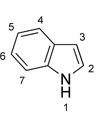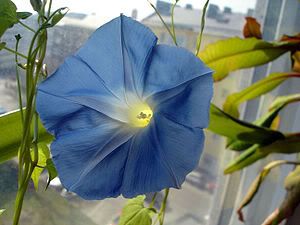Our journey now is ending. This is the final installment on the Drugs of Abuse subseries of Pique the Geek. This one will be a bit different, and will likely take a long time to read, if you listen to the music that I have chosen for it.
LSD is a uniquely 1960s substance, even though it was known before then. Dr. Albert Hofmann first synthesized it in 1938 or so, but sort of forgot about it until 1943. By the way, Dr. Hofmann died this year at the age of 100 years, so that material certainly did not kill him.
This is such a complex topic that it has taken several weeks for me to decide how to divide it into understandable chunks, and then how to present them. The manner in which I finally decided may not be the best, but hopefully it will make some sense. With a topic this complex, it will take two or more installments to complete. We shall begin with the science and history this evening.
First some housekeeping. I STILL have not bought cigarettes since March. This is a good thing. Next week I shall start rolling only one day’s supply and after those are gone, no more for the day. I quit Camel nonfilters that way.
Before we get started into the thick of it, let us have some music to stimulate and relax us simultaneously. I have chosen for this work the seminal work In Search of the Lost Chord by the Moody Blues. I do not want to get into a contest with anyone about which psychedelic band was better than another. There were many, but my personal taste favors them. It is in my case just a matter of taste. Comments are more than welcome for other ideas.
The Moody Blues were one of the rare bands that became better after a personnel shakeup. This was the third record overall, and the second one by the band composed of Mike Pinder, Grahme Edge, Ray Thomas (the three of the original five) with John Lodge and Justin Hayward replacing two former members (one was Denny Laine, who went later to play in Wings with Paul and Linda McCartney). Anyway, this piece is usually called Ride my Seesaw, but it actually the poem Departure first, then Ride my Seesaw is spliced in immediately afterward. The Moody Blues were wont to use unusual meters and sound spacings. By the way, even there was extensive overtracking and rerecording, only the five members of the band played and/or sang on this record. They also wrote all of it. Except for their producer assisting them to blend it, it is entirely their work. Here it is. Particularly listen to the sitar opening, the brilliant words of the poem that indicate synthesia, and the Mellotron mimicking the warp engines from Star Trek (the original series). This record came out in 1968, at the peak of Star Trek’s popularity. It sounds very similar to me. By the way, the new Bayer aspirin “crystal” advert very subtly uses the original Star Trek transportor sound effect.
http://www.youtube.com/watch?v…
LSD is the acronym for the German term, Lysergsäure diethylamid, the German name for Lysergic acid diethylamide in English. It is one of the most potent 5-HT2A agonists known. For those who are familiar with this subseries, this particular receptor is responsible for most, if not practically, all psychedelic effects. I have provided a comprehensive bibliography of this subseries at the end of the post. There are four possible lysergic acids, and only one of them has derivatives that are active psychologically. Here are the chemical structures of the four candidates.

Isomers of Lysergic Acid
I am sorry that this image is fuzzy, but it was the only one that I could find to show all four stereoisomers in the same place and in the same size. The important things to observed are the positions labeled “5” and “8”, and the artwork there. A “wedge” means that the group attached is coming towards you, if the rest of the molecule is essentially in the plane of the computer screen. A series of dashes mean that this group in being projected behind the plane of the screen. This in incredibly important, as I explained a couple of years ago about chrirality. I mention it somewhat in the previous entries in this series. The important think to take from this is that of the four possiblities, only one works in its derivatives, and harsh chemical manipulations will render it useless. Only the one in the upper left has any effect in its derivatives, and it is easy to debase it.
For those of you that have read these posts faithfully, you will see an indole ring in the Lysergic acid moiety. Here is Indole, so you can compare it with Lysergic acid and the most basic of neurotransmitters, serotonin, or 5-HT. Here are the structures for comparison.

Indole

Serotonin, the most ancient neurotransmitter
Note that only the upper left representation of Lysergic acid has the proper sterochemistry. It is not really obvious from these structures, but it is important, because the molecule has to fit lock and key into the 5-HT2A receptor. And it does well. Very well, in fact. So well that it is, as I said, one of the most potent agonists for this receptor known.
Lysergic acid itself is not psychoactive. Only certain derivatives are, the most well known being LSD itself and lysergic acid amide (LSA). LSA is a much weaker agonist, but does essentially the same thing as LSD, but in larger amounts. LSA occurs naturally in a number of plants, most notably morning glories (Ipomoea tricolor) (the Heavenly Blue, Pearly Gates, and Flying Saucers varieties being the most well known, and also Hawaiian Baby Wood Rose (Argyreia nervosa) seeds. There is some controversy about whether LSA itself has much activity or whether other compounds in the seeds are responsible. Here are diagrams of LSA and LSD so that you can see the difference. The only difference is that the two hydrogens on the nitrogen in LSA are replaced by two ethyl groups in LSD.

Heavenly Blue Morning Glory

Hawaiian Baby Wood Rose
It is legal to possess the seeds and plants of these species, but pure LSA is a Schedule III controlled substance since it can, with sufficient expertise and suitable facilities, be converted to LSD.

LSA

LSD
Lysergic acid, obviously, is the central starting material for LSD, but it not easy to come by these days. It used to be uncontrolled, but now is a Schedule III controlled substance because of its potential to be converted to LSD, a Schedule I controlled substance. It is possible to synthesize lysergic acid, but with two chiral centers and difficult chemistry, it is never made that way. Most lysergic is derived from alkaloids contained in ergot (Claviceps purpurea), a parasitic fungus that grows on cereal grains, notably rye. Here is a picture. Note the enlarged grains, characteristic of infection. The grains also have turned purple, hence the scientific name for the fungus.

Ergotized Rye
Ergot plays a significant historical role, thought to be the cause of several disorders from antiquity until very recently. There are reports of outbreaks of mass hysteria in Europe that have been attributed to ergotized grain, and some forensic historians have seemed to link the timing of those outbreaks with weather conditions favorable for the development of heavily ergotized grain (cool, wet growing seasons). Some scholars even blame the Salem witch episode with ergot. While there may be some merit to that argument, my personal feeling is that superstition and extreme fundamentalist Christianity had more to do with it than ergot did, but it could have been a factor.
More common than mass hysteria is the medical condition called ergotism, which is manifested by a particular type of dry gangrene of the extremities, usually fingers and toes, that causes them simply to dry up and die. It turns out that some of the alkaloids in ergot cause intense vasoconstriction, thus cutting off the blood supply to extremities. People suffering from ergotism generally developed it over the course of weeks or months because of eating grain contaminated with lesser amounts of ergot than will produce mental effects. Interestingly, ergotism is pretty much a thing of the past because of better agricultural practices, with a notable exception. Some people taking lysergic acid based pharmaceuticals over long periods of time are at risk for developing it, but with good medical monitoring this risk is minimized.
Through a complex set of manipulations, the alkaloids in ergot are cleaved to lysergic acid. Lysergic acid is the starting material for a good number of legitimate pharmaceutical products, including drugs for migraine headache, in obstetrics, and to treat Parkinson’s disease, to name just a few.
LSD was discovered in 1938 by Dr. Albert Hofmann, who has just this year died at the age of 100. He was working in Switzerland for the drug outfit Sandoz (now Novartus) looking for a drug that would stimulate breathing in patients that were on the operating table, also called analeptic drugs. Sandoz had quite a large supply of lysergic acid, a very complex indole alkaloid with known potent effects. Hofmann studied under the brilliant chemist Spath, who elucidated the structure of mescaline years before. Hofmann shelved the project until 1943, then took it up again.
Working the the laboratory one day, he accidentally spilt a few drops of a methanolic solution of LSD onto his fingers and evidently absorbed some. He felt odd later on, and remembered spilling the material. A couple of days later he decided to ingest some intentionally, and took what he was sure was a dose too small to have any effect. That dose was around 500 micrograms. Today it is known that 500 micrograms of LSD is a very large dose, and one that even dedicated “acidheads” usually do not approach, 200 to 300 micrograms causing profound psychedelic effects.
Hofmann later recalled that the first human LSD experience was what later became known as a “bad trip”. About half an hour after taking the dose, he began to feel quite unwell and decided to go home and rest. He got on his bicycle (war affected even the Swiss, even though they were neutral) and began to ride home. By the time that he got home he was “peaking” on a very large dose of LSD and was terrified. He had full blown visual hallucinations and was sure that he was going to lose his mind and would never “come back”. Well, he did come back the next day but was forever changed by the experience. The rest of his life he pretty much dedicated to psychedelic research until just a few weeks before his death at 100 years. Interestingly, whilst I am finishing this post, on the Documentary Channel is Hofmann’s Potion, an excellent film on this topic. I recommend it highly.
Sandoz developed an interest in LSD, marketing it for research in psychiatry under the trade name Delysid. It was used as what by most accounts was a fairly successful treatment for alcoholism and opiate addiction, much like ibogaine is, but there were few restrictions at the time. CIA also developed an interest in it as a “mind control” agent as part of Project MKULTRA. Due at least in part to this project, Ken Kesey was introduced to it, and Kesey became one of the higher profile figures promoting its use. The other high profile figure was Timothy Leary, and we will talk more about them next time when we discuss the popular culture of LSD.
Sandoz became very reluctant to sell Delysid after the mid 1960s because of alarm that use of the drug outside of medical research and treatment, so other sources were developed for the recreational demand. One of the earliest and most famous “cooks” at the time was Augustus Owsley Stanley III, usually just referred to as Owsley. He bought up a large chunk of the world’s supply of lysergic acid and converted it to LSD in 1965 through 1967, providing at the time the highest quality material on the market, estimated at over 99% pure, except for intentional additives for ease of handling. More on him next time as well.
LSD is difficult to handle because it is so potent and such a fragile molecule. It is light sensitive, base sensitive, acid sensitive, and oxidized in air slowly. To handle the tiny quantities required for a dose (for argument, let us assume a 100 microgram dose, one that Owsley often used), it has to be diluted either in a solvent or with a solid carrier to allow accurate measurement. You can not see 100 micrograms of anything, because it is so tiny. However, it is relatively easy to take 100 milligrams and dilute it so that, say, a drop of liquid contains 100 micrograms. In The Electric Kool-Aid Acid Test by Tom Wolfe (a very good documentary, Wolfe does excellent work) there is mention of capsules of “acid gas”, made by dropping a drop of LSD in a solvent into a half capsule, allowing it to dry, and putting the other half on it. The drug was not visible, hence the name.
LSD has been marketed in many ways, on sugar cubes, on blotter paper, in gelatin wafers, and in tablets. We will discuss more about that next time.
Medically, the use of LSD has been shown not to cause physical damage. All of the horror stories about chromosome damage, physical brain damage, and so on are pretty much just that: stories. The caveat is that I am talking about pharmaceutical grade, real LSD. The same can not be said with certainty for what is sold on the streets, which contains who knows what. Some of the psychedelic amphetamines are known to cause neuron damage, so buyer beware.
Mental “damage” is quite another story. I will go on record right now and say that there are some people who should NEVER experiment with any psychedelic drug for a variety of reasons. If one reads much about psychedelics, the conclusion is pretty evident that no one who has taken them are ever the same as they were before the experience. Some report very positive results outcomes, including greater self awareness and self insight, to deep spiritual experiences, to completely different outlooks on life. Some report very negative results, including possible activation of existing latent psychoses. However, those reports are very difficult to prove one way or another. How can one be certain that a latent psychosis would not have been revealed anyway?
Of all drugs, LSD has probably received more undeserved bad press than any other, except possibly for Cannabis. The understanding that most people have about LSD is no deeper than what they learned on the Blue Boy episode on the old Dragnet. Authorities have demonized this material to an extreme degree, and real facts, whilst available, are not often publicized. There are hundreds of scholarly works on the subject, and anyone with access to a university or medical library can educate herself or himself as to the facts. Some of the literature is dry, but there is a lot of it out there.
Do not assume that I either encourage or discourage the use of LSD. From a legal standpoint, the use of it is fraught with extreme hazard because of the stigma. Simple possession is an almost sure method of lengthy incarceration and a permanent felony record, and distribution gets the keys thrown away for you. From a moral standpoint, it is not my place to decide what anyone puts in their own body. From a scientific standpoint, I urge a large amount of caution. LSD is not something to be taken lightly, pun notwithstanding. In a future installment we will discuss what those who seem to know the “proper” manner in which to use the drug to minimize ill effects and maximize positive ones.
Well, you have done it again. You have wasted a perfectly good batch of electrons reading this drivel, but I appreciate it. And even though Bill O’Reilly supports our new Supreme Court nominee when he reads me say it, I always learn much more than I could possibly hope to teach writing these posts, so please keep comments, questions, corrections, and other feedback coming.
Here is a complete bibliography of this series to date. Since only the last couple of entries have been posted at docudharma, they all link to Kos:
http://www.dailykos.com/story/…
http://www.dailykos.com/story/…
http://www.dailykos.com/story/…
http://www.dailykos.com/story/…
http://www.dailykos.com/story/…
http://www.dailykos.com/story/…
http://www.dailykos.com/story/…
http://www.dailykos.com/story/…
http://www.dailykos.com/story/…
http://www.dailykos.com/story/…
http://www.dailykos.com/story/…
http://www.dailykos.com/story/…
Warmest regards,
Doc
Crossposted at Dailykos.com

30 comments
Skip to comment form
Author
for The Moody Blues?
Warmest regards,
Doc
I`ve also done windowpane many times but have done it at times by inserting the little gel behind my eyelid, which was a common practice also.
And strangely enough, The Moody Blues just started playing in an ad for the Aquarium of the Pacific.